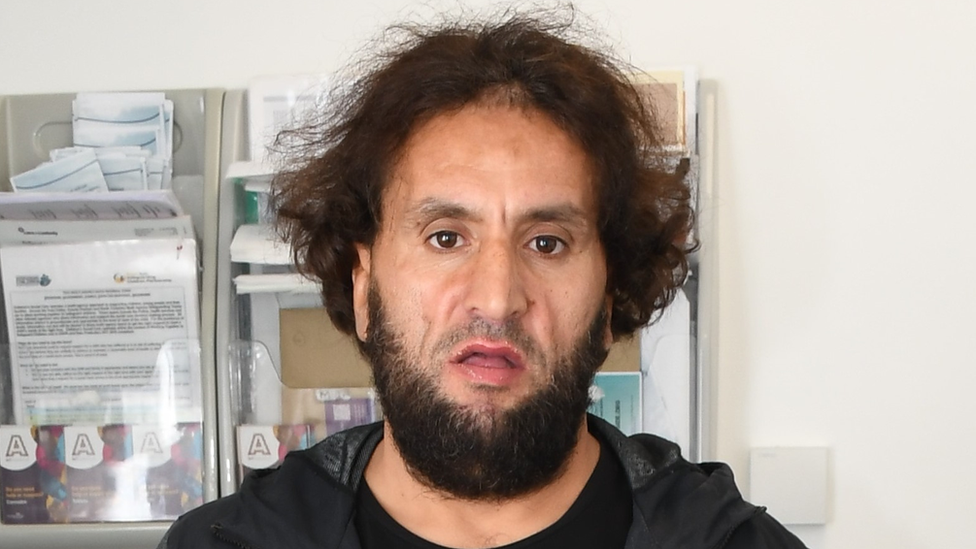Search results
With a population of 44 million, Algeria is the tenth-most populous country in Africa, and the 32nd-most populous country in the world. The capital and largest city is Algiers, located in the far north on the Mediterranean coast. Centuries of Arab migration to the Maghreb since the 7th century shifted the demographic scope in Algeria.
- Algiers
Algiers (/ æ l ˈ dʒ ɪər z / al-JEERZ; Arabic: الجزائر,...
- Flag of Algeria
The copyright of all Algerian photographs and works of...
- Berber
Tamazight, or Standard Algerian Berber, is the standardized...
- Emblem of Algeria
Emblem of Algeria (Coat of Arms) Armiger: People's...
- President of Algeria
The president of the People's Democratic Republic of Algeria...
- History of Algeria
Prehistory. Evidence of the early human occupation of...
- Demographics of Algeria
Population development of Algeria Location of Algeria....
- French Algeria
French Algeria (French: Alger until 1839, then Algérie...
- Algeria–Morocco Relations
Algeria is represented in Morocco by its embassy in Rabat;...
- Sétif and Guelma Massacre
The Sétif and Guelma massacre (also called the Sétif, Guelma...
- Algiers
Portal. : Algeria. Algeria, officially the People's Democratic Republic of Algeria, is a country in North Africa. Algeria is bordered to the northeast by Tunisia; to the east by Libya; to the southeast by Niger; to the southwest by Mali, Mauritania, and Western Sahara; to the west by Morocco; and to the north by the Mediterranean Sea.
Algeria, officially the People's Democratic Republic of Algeria, is a country in North Africa. Algeria is bordered to the northeast by Tunisia; to the east by Libya; to the southeast by Niger; to the southwest by Mali, Mauritania, and Western Sahara; to the west by Morocco; and to the north by the Mediterranean Sea. It is considered part of the Maghreb region of North Africa. It has a semi ...
- Size and Boundaries
- Geographic Regions
- Climate and Hydrology
- Terrain
- Protected Areas
- Extreme Points
- See Also
Land boundaries: Total: 6,734 km (4,184 mi) Border countries: Libya 982 km (610 mi), Mali 1,376 km (855 mi), Mauritania 463 km (288 mi), Morocco 1,559 km (969 mi), Niger 956 km (594 mi), Tunisia 965 km (600 mi), Western Sahara42 km (26 mi). Area – comparative: slightly larger than the Democratic Republic of the Congo and Saudi Arabia Coastline:2,14...
The Tell
The fertile Tell is the country's heartland, containing most of its cities and population. Made up of hills and plains of the narrow coastal region, the several Tell Atlas mountain ranges, and the intermediate valleys and basins, the Tell extends eastward from the Moroccan border to the mountains of the Grande Kabylie and the Bejaia Plain on the east.Its eastern terminus is the Soummam River. The best agricultural areas are the gentle hills extending 100 kilometers westward from Algiers; the...
The High Plateaus and the Saharan Atlas
Stretching from the Moroccan border the Tell Atlas, including the Djebel Babor formation, is the dominant northwestern mountain range. Stretching more than 600 kilometers eastward from the Moroccan border, the high plateau area (often referred to by the French name Hautes Plaines or Hauts Plateaux) consist of undulating, steppe-like plains lying between the Tell and Saharan Atlas ranges. The elevation averages between 1,100–1,300 metres (3,600–4,300 ft) in elevation in the west, dropping to 4...
Northeastern Algeria
Eastern Algeria consists of a massif area extensively dissected into mountains, plains, and basins. It differs from the western portion of the country in that its prominent topographic features do not parallel the coast. In its southern sector, the steep cliffs and long ridges of the Aurès Mountains create an almost impenetrable refuge that has played an important part in the history of the Maghrib since Roman times. Near the northern coast, the Petite Kabylie Mountains are separated from the...
Northern Algeria is in the temperate zone and enjoys a mild, Mediterranean climate. It lies within approximately the same latitudes as southern California and has somewhat similar climatic conditions. Its broken topography, however, provides sharp local contrasts in both prevailing temperatures and incidence of rainfall. Year-to-year variations in ...
Clearing of land for agricultural use and cutting of timber over the centuries have severely reduced the once bountiful forest wealth. Forest fires have also taken their toll. In the higher and wetter portions of the Tell Atlas, cork oak and Aleppo pine grow in thick soils. At lower levels on thinner soils, drought-resistant shrubs predominate. The...
Algeria has a number of protected areas including National Parks and nature reserves. An example of such a protected area is the Djebel Babor Nature Reserve within the Djebel Babor Mountains; the Djebel Babor is also one of the few relict habitats for the endangered Barbary macaque, Macaca sylvanus. The national parks in Algeria are: Ahaggar, Belez...
Elevation extremes: 1. Lowest point: Chott Melrhir: −40 metres (−130 ft) 2. Highest point: Mount Tahat: 2,908 metres (9,541 ft) Points that are farther north, south, east or west than any other location:[citation needed] 1. Northernmost point – Cap Takouch, Annaba Province or Cap Bougaroûn, Skikdaprovince 2. Easternmost point – the tripoint with Ni...
- North Africa
- Mount Tahat, 2,908 m
- Ranked 10th
- Chott Melrhir, −40 m (131 ft)
News about Morocco, kit confiscation, map row
News about Algeria, Egypt, durum wheat
News about Nabors Industries Ltd., Q1 2024, revenue growth
News about Ahmed Alid, murder, Terence Carney
Algeria ( / ælˈdʒɪəriə / ( listen) or / ɔːl -/ ), officially the People's Democratic Republic of Algeria, is a country in North Africa. It is the tenth largest country in the world, and the largest country in Africa. [10] It is part of the Maghreb region of Northwest Africa. Algiers is the capital of the country.
People also ask
How many people live in Algeria?
Was Algeria previously colonized?
What is Algeria's official name?
Algeria is a North African country with a rich and diverse history, culture, and geography. Learn about its flag, capital, population, map, and language, as well as its economy, natural resources, and challenges. Explore the fascinating facts and figures of Algeria with Britannica's summary.



